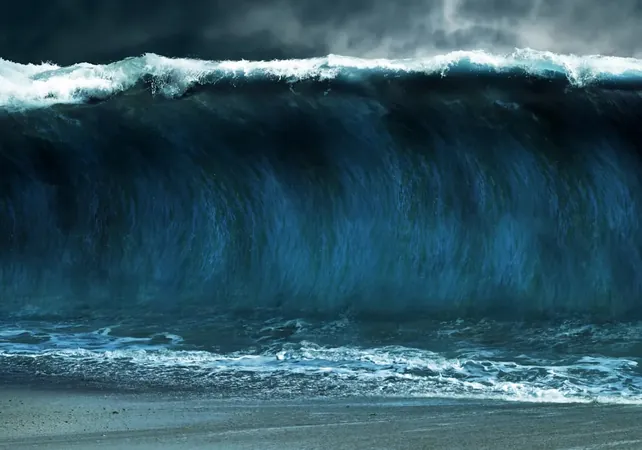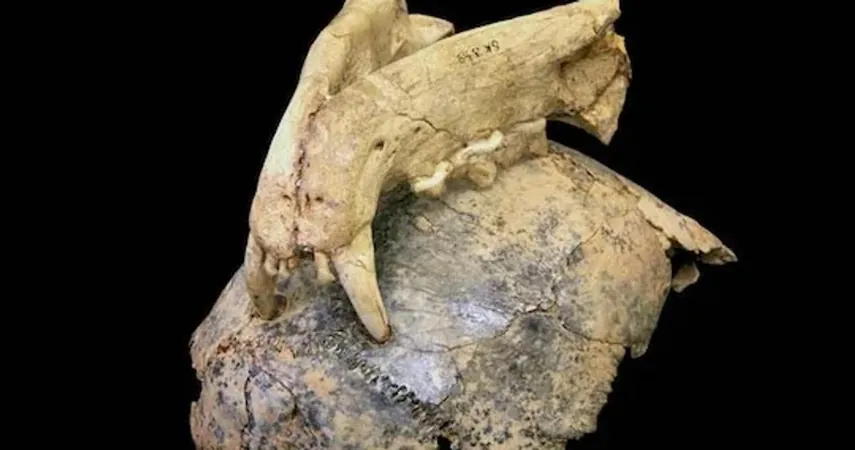
NASA's GUARDIAN System Revolutionizes Tsunami Detection — Essential Info for Coastal Travelers!
2025-09-19
Author: Siti
In a stunning display of technological prowess, NASA's groundbreaking GUARDIAN system has proven its mettle by detecting a massive tsunami triggered by a magnitude 8.8 earthquake near Russia’s Kamchatka Peninsula. This event not only tested the experimental technology but showcased its potential to save lives.
According to researchers at the Jet Propulsion Laboratory (JPL) in Southern California, GUARDIAN (GNSS Upper Atmospheric Real-time Disaster Information and Alert Network) successfully identified atmospheric disturbances caused by the tsunami, sending alerts to experts swiftly — within a mere 20 minutes of the earthquake. These alerts provided critical information about the tsunami's arrival, giving communities as much as 40 minutes of advanced warning before the waves hit Hawaii and other Pacific locations on July 29.
How GUARDIAN Works Its Magic
GUARDIAN operates by monitoring the ionosphere, the charged layer of the upper atmosphere, where large-scale ocean movements during a tsunami create low-frequency waves. While traditional satellite signal processing ignores these subtle fluctuations, GUARDIAN harnesses them as harbingers of disaster.
This state-of-the-art system analyzes data from over 350 ground stations linked to GPS and other Global Navigation Satellite Systems (GNSS). In optimal conditions, it can detect tsunami activity as far as 1,200 kilometers (745 miles) away. With its recent upgrades, including an advanced AI model designed for tsunami detection, GUARDIAN is now even better equipped for imminent threats.
A Game Changer for Coastal Travelers!
While current tsunami warnings primarily rely on seismic data and deep-ocean pressure sensors — which are costly and often underwhelming in coverage — GUARDIAN fills these critical gaps. According to Christopher Moore, director of NOAA's Center for Tsunami Research, this system provides vital, real-time data that could be the difference between safety and disaster for coastal travelers.
Adrienne Moseley, co-director of the Joint Australian Tsunami Warning Centre, stressed the necessity of sharing GUARDIAN's data across borders. "Tsunamis don't recognize national boundaries, and only through collaboration can we assess the threats posed to all exposed coastlines," she affirmed.
In an era where natural disasters are becoming alarmingly frequent, GUARDIAN holds real potential to revolutionize how we predict and respond to tsunamis, offering travelers peace of mind when venturing along the picturesque yet perilous shores of the Pacific.



 Brasil (PT)
Brasil (PT)
 Canada (EN)
Canada (EN)
 Chile (ES)
Chile (ES)
 Česko (CS)
Česko (CS)
 대한민국 (KO)
대한민국 (KO)
 España (ES)
España (ES)
 France (FR)
France (FR)
 Hong Kong (EN)
Hong Kong (EN)
 Italia (IT)
Italia (IT)
 日本 (JA)
日本 (JA)
 Magyarország (HU)
Magyarország (HU)
 Norge (NO)
Norge (NO)
 Polska (PL)
Polska (PL)
 Schweiz (DE)
Schweiz (DE)
 Singapore (EN)
Singapore (EN)
 Sverige (SV)
Sverige (SV)
 Suomi (FI)
Suomi (FI)
 Türkiye (TR)
Türkiye (TR)
 الإمارات العربية المتحدة (AR)
الإمارات العربية المتحدة (AR)